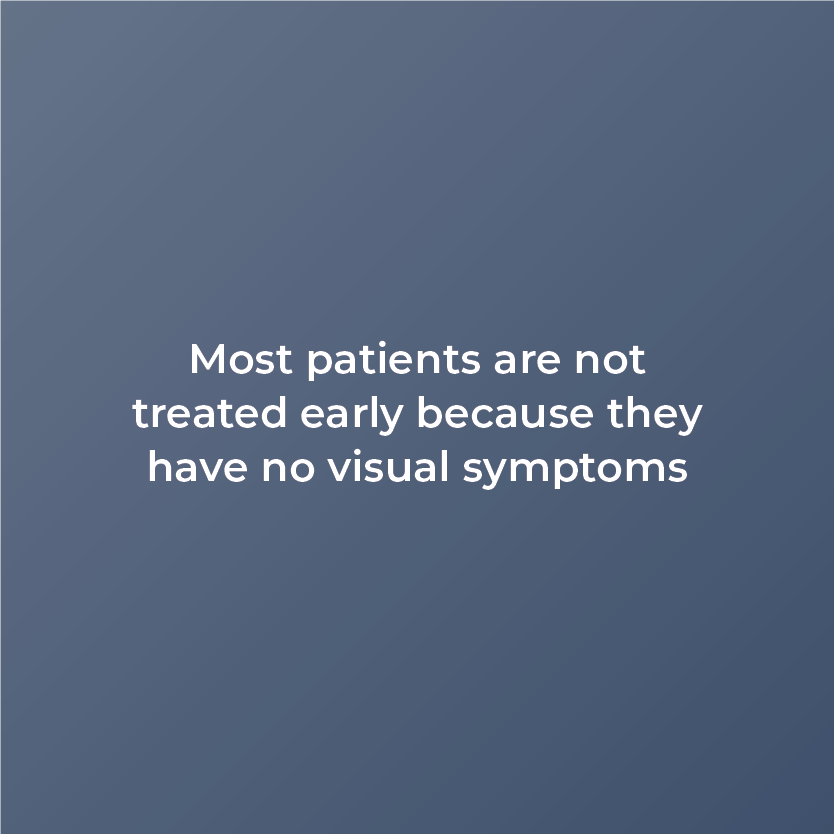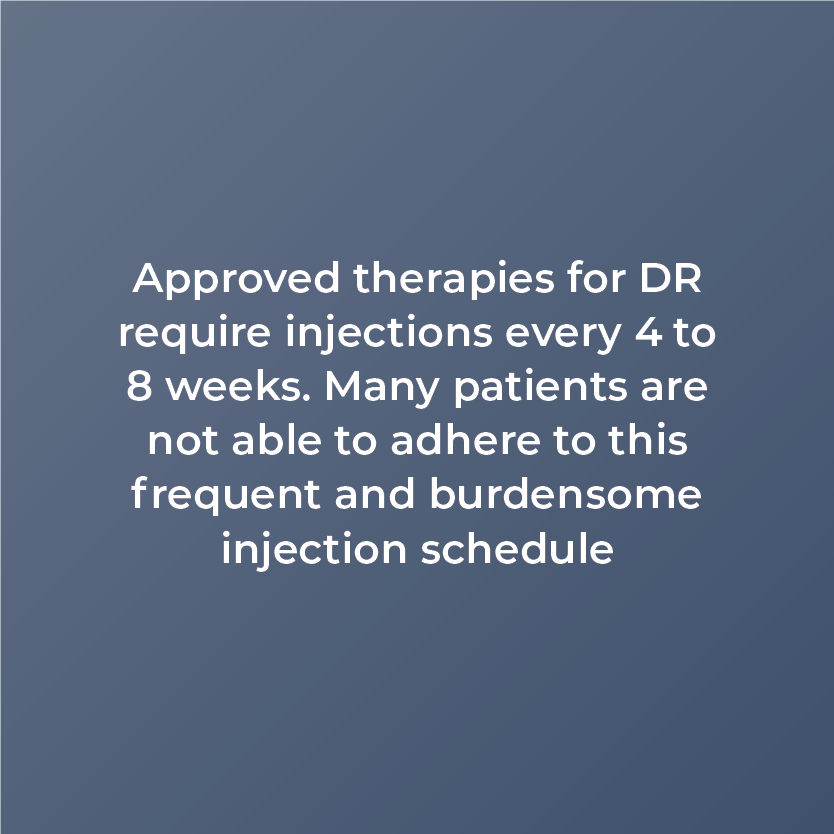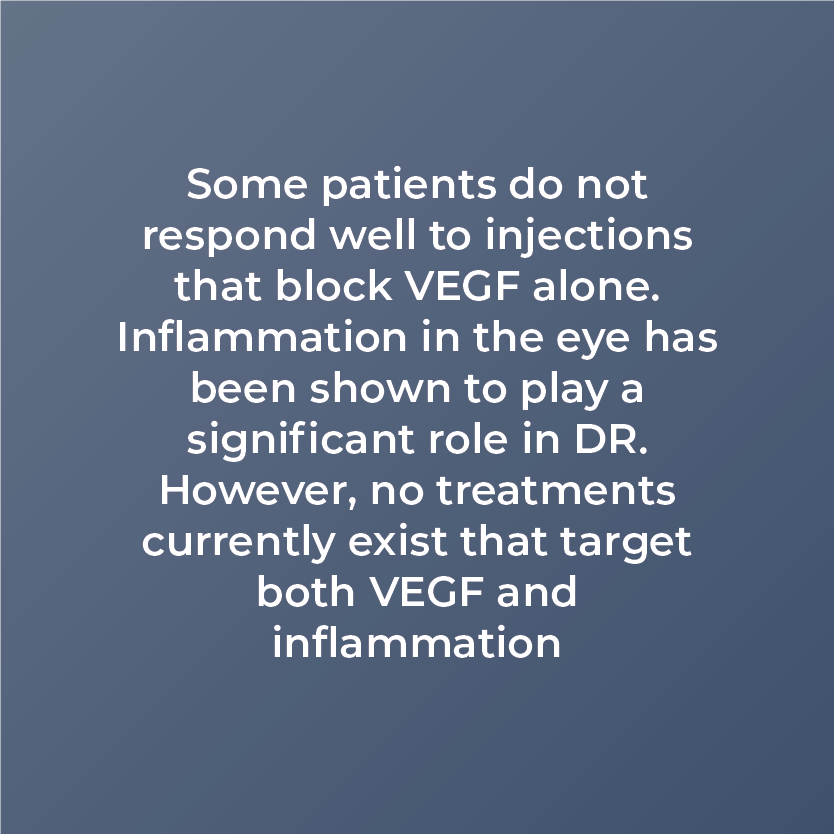WHAT IS DIABETIC RETINOPATHY?
Diabetic retinopathy (DR) is a complication of diabetes that affects the eye. High blood sugar levels due to diabetes damage blood vessels in the retina, the light-sensitive tissue in the back of the eye that helps process visual information, causing them to leak fluid and blood into the retina. If left untreated, diabetic retinopathy progresses and eventually leads to serious vision-threatening complications, such as diabetic macular edema (DME).
Diabetic retinopathy progresses over time in stages. The early stage is called non-proliferative diabetic retinopathy (NPDR). The more advanced stage is called proliferative diabetic retinopathy (PDR).
Non-proliferative diabetic retinopathy
NPDR is the early stage of diabetic retinopathy, in which symptoms may be mild or nonexistent. This is the more common form of DR.
In NPDR, blood vessels in the retina weaken causing them to seep fluid and blood into the retina. When the fluid accumulation, or swelling, affects the macula, the region within the retina responsible for clear central vision, it is called diabetic macular edema or DME. This is a serious condition that can lead to vision loss if not treated. DME may occur at any stage of diabetic retinopathy.
Proliferative Diabetic Retinopathy
If untreated, NPDR can progress to proliferative diabetic retinopathy (PDR), a more advanced stage of diabetic retinopathy.
To improve blood circulation in the retina, cells make a protein called VEGF to stimulate growth of new blood vessels to bypass the damaged vessels. The new vessels are abnormal, fragile and easily tear. As a result, they may leak blood into the vitreous, the gel-like fluid that fills the back of the eye, causing blurry vision. If left untreated, PDR can cause severe vision loss and even blindness.
CURRENT TREATMENT AND LIMITATIONS
Early detection and treatment are very important. The goal of treatment is to slow or stop the progression of disease and preserve vision. Even if no visual symptoms are present, damage is occurring in the eye that can lead to vision-threatening complications, such as DME, at any time.
Injections in the eye that target the protein VEGF is the current treatment approach for DR. These injections work to stop the formation and leakiness of abnormal blood vessels in order to slow down the damaging effects of DR.
Many patients today are still at risk for vision loss because:



HOW KODIAK CAN HELP
Kodiak’s Antibody Biopolymer Conjugate (ABC) medicines are designed to address these important challenges.
Tarcocimab tedromer, Kodiak’s lead investigational medicine, is designed to provide twice yearly dosing for the majority of patients with DR. Learn more.
KSI-501, Kodiak’s second investigational medicine, is a first-in-class bispecific ABC designed to address both vascular permeability and inflammation for high-prevalence retinal vascular diseases. Learn more.
REFERENCES
- How to Promote Eye Health for People With Diabetes. Centers for Disease Control and Prevention. Updated March 3, 2022. Accessed May X, 2023. https://www.cdc.gov/diabetes/professional-info/health-care-pro/diabetes-eye-health.html









